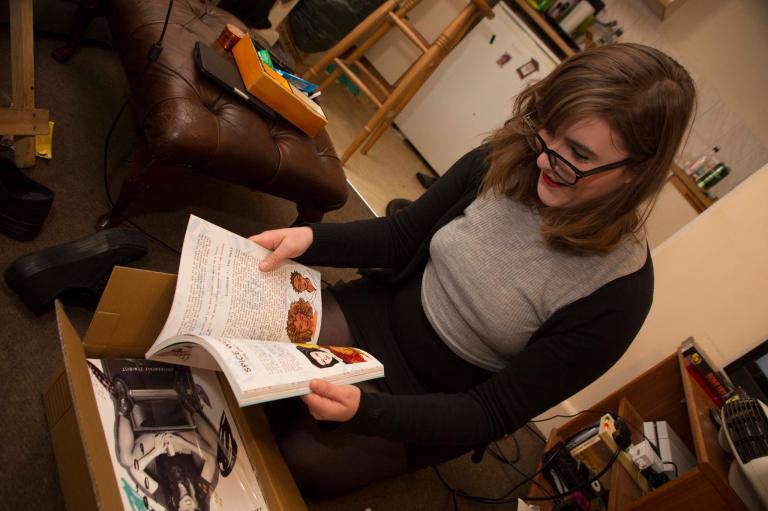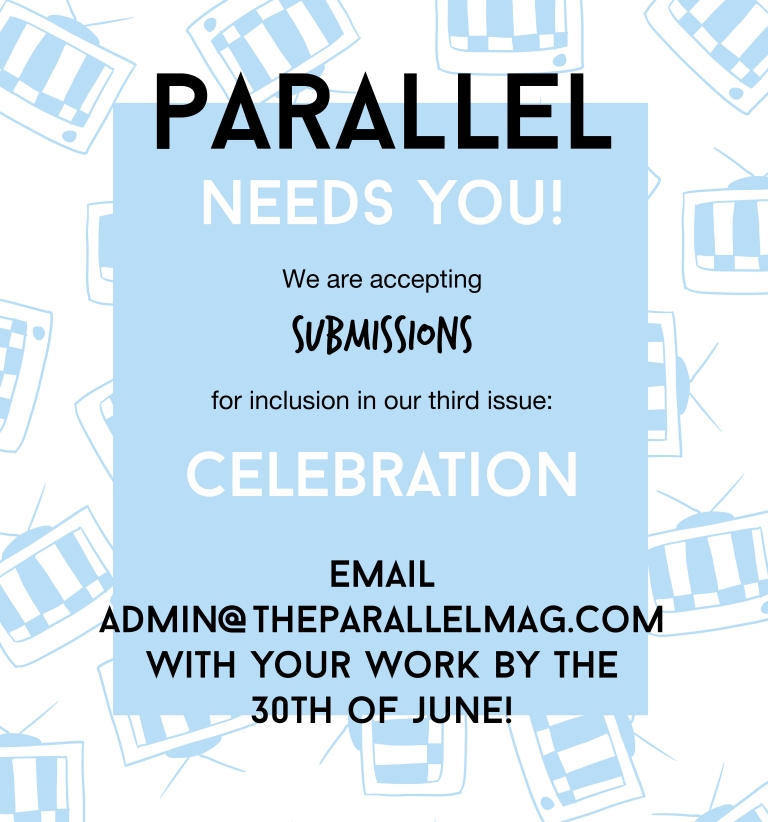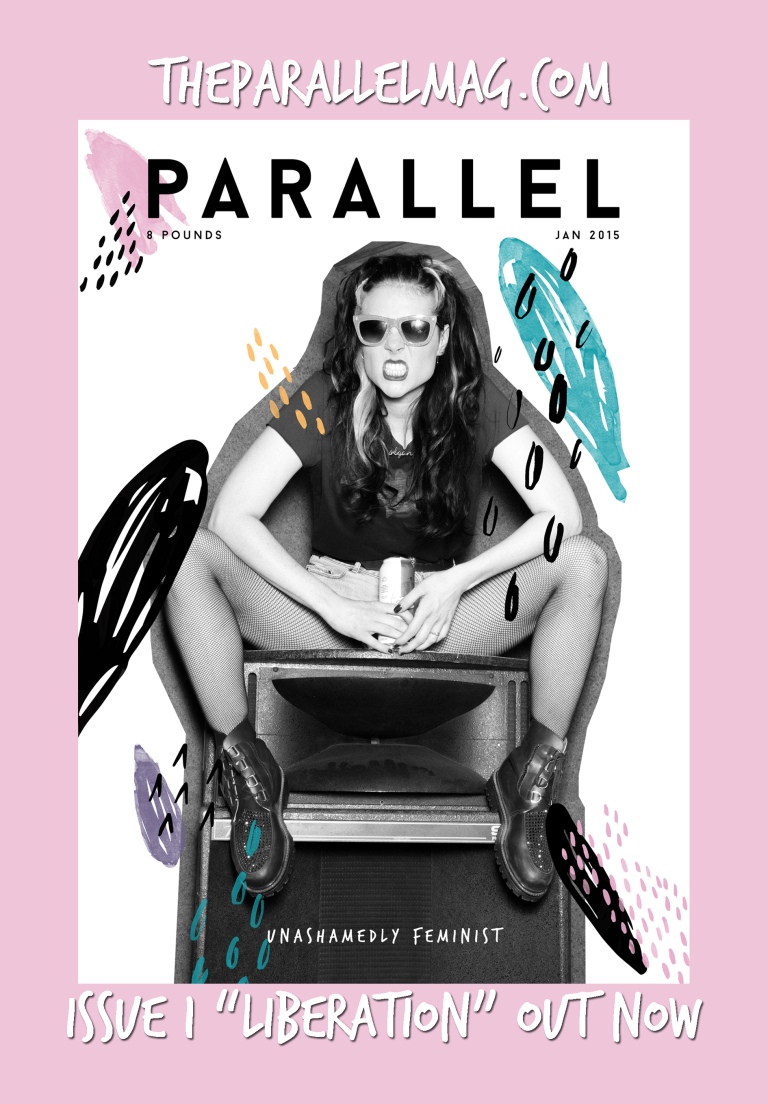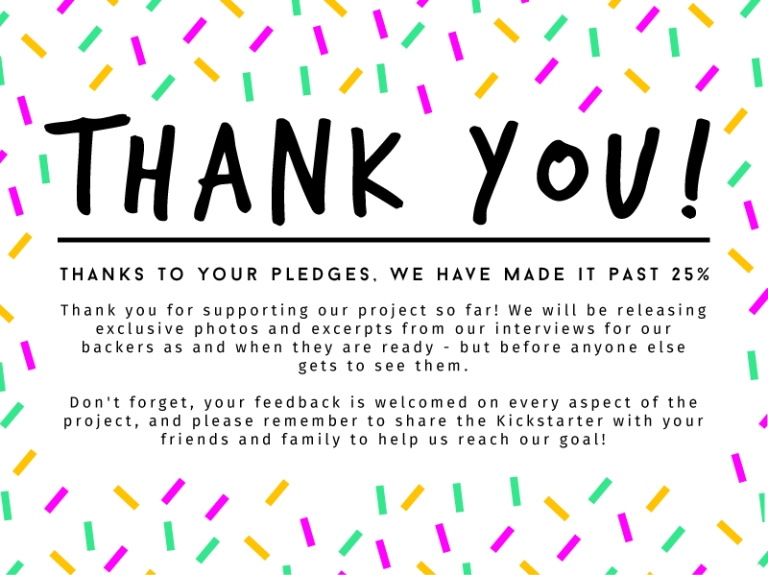I’ve been running my magazine now since 2014, and it’s been a massive learning curve. Like many people setting up independent magazines and zines, I had no real experience with the process of putting something like this together, so I had to learn everything from scratch. I get questions about my magazine quite frequently, so I thought I’d put together a little how-to for running your own independent publication.

-
Collaborate
Trust me: you are not going to be able to do this by yourself. Before putting Parallel together, I had made a few small feminist zines consisting of less than 20 pages, which had been done solely by myself – and I had found that difficult. Parallel was, from the very beginning, a collaborative effort. There were 25 volunteers on the original team, and that has grown and shrunk over the last year and a half. It currently consists of around 30.
Collaborating is important for a lot of reasons. It means that you’re not carrying the burden of the whole publication by yourself: there are people there to help you. Their creative input and ideas are invaluable. It also means that you’re getting various perspectives of, and in, your magazine. Our team is diverse, consisting of women of colour as well as white women, poor women as well as middle or upper class women, and women from various countries throughout the world. So the work that ends up in the magazine is based on a assortment of experiences and opinions.
We also accept submissions, and set up interviews and features with female creatives, so we collaborate with people who are not “officially” on the team. One super important thing to remember with external collaborations is to be friendly! Be accommodating to people’s requests, and understand their limits. Respond to every email, even if it’s just to acknowledge you’ve received it. Be upfront and honest – if you don’t think something will work for your publication, don’t give people false hope. I can count on one hand the amount of people who have been extremely rude in their responses to me, and guess what? I’ve vowed to never work with them again.

-
Give yourself time
A magazine isn’t going to come together overnight. You need to be realistic with your deadlines, based on how big you want the publication to be. Parallel is typically between 140- 180 pages, and we publish them every 3 months. That means we have around 2 months to work on each issue. Because everything was brand new when we first started, we didn’t really have any idea of how to schedule the workload. It’s definitely something that you need to learn “on the job”, and figure out as you go. We’ve now settled into a routine that works really well for us: first we brainstorm; then people select their assignments and get to work. Roughly a month later is the draft deadline, which is when graphic designers can start on their part using the rough drafts. A week or so after that is the final deadline for writers and visual artists, and submissions. Graphic designers get another 2-3 weeks to finish of the design and layout, and then we get it sent to print!
Another part of “giving yourself time” is making sure that you are looking after yourself. Stick to your schedule so that you’re not in a massive rush at the final deadline, and so you’re not suddenly incredibly stressed out. There have been at least 2 issues of Parallel where I have left almost everything to the last minute, and have spent a couple of weeks being stressed out at home, and at my full-time (40 hours per week) office job, and have had to work on the magazine on my lunch break and in my downtime. If you stick with a strict schedule, everything will work out incredibly smoothly (trust me), and you’ll still have time to have fun and look after yourself. Even if you are stressed out, remember that this is your publication, and if you need to push it back by a week or so, then do. Your mental and physical health is the most important thing, and your readers will agree.
-
Listen to criticism
This is so important, especially for a feminist publication. Feminism covers such a large amount of subjects, and every now and again you’re bound to get something wrong. Take, for example, the cover of issue 3 of Parallel, the “celebration” issue. I did a casting call for local feminists to take part in the cover, which was basically a party scene. We only got a few people interested in it, and when we set up the shoot we realised everyone was white. We’d pretty much run out of time, so we went with it. Soon after revealing the cover, we got a fair amount of criticism with people stating we were representing White Feminism and not being inclusive. It was easy to feel defensive: after all, no one had read the magazine yet, and that issue featured many women of colour and their stories. However I had the obligation to take responsibility, to apologise, and to assure people that their concerns had been heard. A big part of Parallel is representing women who do not necessarily get fair representation in the mainstream media, so for us to pull a move that many typical women’s magazines do frequently – not representing women of colour on our cover – was obviously going to upset people.
Criticism can be hard to take, especially if it’s criticism of your personal work, but it’s always constructive, and it really is important to take it on board. After all, it’s usually only going to improve your publication and make it more popular. More people will pay attention if you listen to what they want to see and read.
-
Promote yourself
Parallel would not have succeeded without social media. I can say that with 100% certainty. The initial call-out for volunteers was posted on my blog and my social media. Our team meetings take place via Facebook and an online forum. Our blog, Twitter, and Facebook are there to promote the printed magazine, and to share more current news stories that would be outdated by the time the magazine went to print. And we use social media to find creatives and activists to feature, talk to, and interview.
Without a strong online platform, your magazine – sadly – will probably not get far. Social media is used by the majority of people, and utilising hashtags, photographs, and sneak peeks of your work is super effective in getting people interested. This is true for almost every industry, and if you don’t participate then you will probably miss out on a large percentage of your potential audience. And you’ll also miss out on getting to network with women, and having a conversation with them. How can you represent the opinions of women when you aren’t communicating with them on a daily basis?
But saying that, traditional forms of media aren’t completely obsolete. We also make use of flyers/posters, banners, and doing research through books and other magazines.

-
Have money
This is probably the most frustrating part of running a publication, particularly one that – like ours – doesn’t use advertising to produce revenue. We started Parallel through a Kickstarter, a form of crowd-funding, and that gave us enough money for the first year of printing the magazine. But there are so many other things you need to take into consideration with your budget. If you’re wanting to network, or interview people, you’ll need travel money put aside (unless you live in London, in which case you’re very lucky). You’ll also need money for merchandising: our badges are one of the most popular things that we sell.
There are lots of different funds that you can apply for, and there are many out there that are specifically for niche subjects such as art publications, poetry, or work that is there to help women. Crowd-funding is a great way of raising money: we offered people copies of the magazine, their names in the magazine, and other merchandise for donating. But if you aren’t looking to use advertisers to fund your publication, you need to come to terms with the fact that you’re probably going to have to put a bit (or a lot) of your own money into it as well. Remember to keep records of all outgoings and incomings, because when you start a magazine you are technically starting a business, and will need to register as self-employed. And a fun part of being self-employed is accounting, and doing your self-assessment for tax at the end of the tax year.

I hope that this list has helped you, and if you have any further questions then don’t hesitate to get in touch with me. If you’re interested in my magazine, you can find it at the links below.
